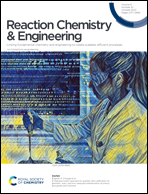Purification of chlorine-containing copper smelting wastewater using extraction-stripping-salting out method
Abstract
The high concentration of Cl− in wastewater adversely affects production and environment. The existing chlorine-containing wastewater treatment processes are difficult to meet the requirements of wastewater application objects and economic and environmental protection. The extraction and stripping behaviors of Cl− from copper smelting wastewater by trialkylamine (N235) were investigated along with the crystallization process. The single extraction and stripping of Cl− were achieved by adjusting the extractant concentration, phase ratio, extraction time, and stripping agent concentration. Under optimum conditions, the better single extraction efficiency and stripping efficiency were 82.96% and 58.46%, respectively. The number of theoretical stages required for the effective extraction of Cl− was analyzed using McCabe-Thiele's diagram. The Cl− concentration could be decreased from 5080 mg L−1 to 150.6 mg L−1 through three counter-current extraction stages, which met the requirement of wastewater recycling. Under the three cross-current stripping stages, the dechlorination efficiency of 98.05% with a residual Cl− concentration of less than 178 mg L−1 was achieved. Furthermore, the organic phase was easily used for extraction and stripping cycles (five times). The Cl− in the solution was precipitated by NaOH to form NaCl crystals based on the common ion effect of Na+, and the purity of the NaCl crystals was more than 97%. Finally, the anion exchange mechanism of extracting Cl− by N235 was analyzed using the slope method, equimolar method, and FT-IR and XPS analyses.



 Please wait while we load your content...
Please wait while we load your content...